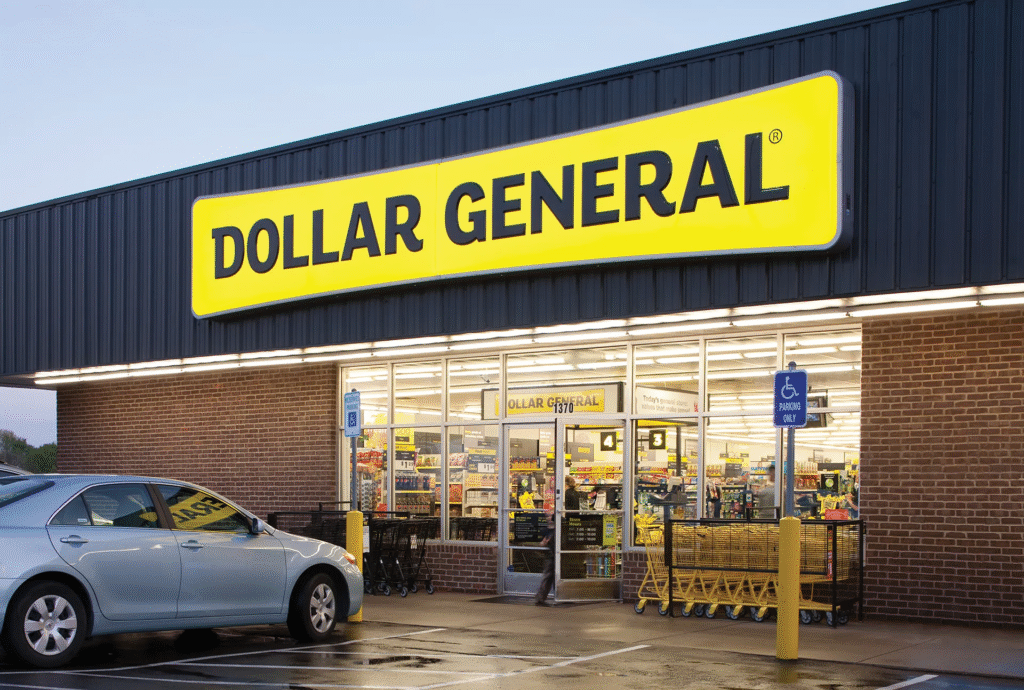Dollar General Corporation (NYSE: DG) is a leading American discount retailer headquartered in Goodlettsville, Tennessee. Founded in 1939 by James Luther Turner and his son Cal Turner Sr., the company has grown from a single store to over 20,000 locations across the United States. Dollar General offers a wide range of products, including food, household items, apparel, and seasonal goods, primarily targeting low- to middle-income consumers in rural and suburban areas. The company’s business model focuses on providing convenience and value through everyday low prices and a broad selection of private-label products. With its extensive store network and commitment to affordability, Dollar General has become a staple in many communities, particularly those underserved by larger retailers.

Recent Earnings and Outlook
On June 3, 2025, Dollar General reported its fiscal Q1 2025 earnings, exceeding analyst expectations. The company posted earnings per share (EPS) of $1.78, surpassing the consensus estimate of $1.46. Revenue for the quarter reached $10.4 billion, a 5.3% increase year-over-year, beating the projected $10.25 billion. Following the strong performance, Dollar General raised its full-year EPS guidance to a range of $5.20 to $5.80 and adjusted its net sales growth projection to 3.7% to 4.7%, up from the previous 3.4% to 4.4% range.
Company History and Operations
Dollar General’s origins trace back to 1939 when J.L. Turner and his son Cal Turner Sr. established J.L. Turner and Son Wholesale in Scottsville, Kentucky. The first Dollar General store opened in Springfield, Kentucky, in 1955, introducing the concept of selling items for no more than one dollar. The company went public in 1968 and has since expanded its footprint significantly. Headquartered in Goodlettsville, Tennessee, Dollar General operates over 20,000 stores across 47 states, employing approximately 163,000 people . Its product offerings include consumables, seasonal items, home products, and apparel, with a focus on private-label brands to maintain low prices. Key competitors in the discount retail space include Walmart, Dollar Tree, Family Dollar, and Target.
Market Landscape and Growth Projections
The dollar and variety store industry in the United States has experienced steady growth, with a compound annual growth rate (CAGR) of 0.8% between 2020 and 2025 . Factors contributing to this growth include economic uncertainty, increased demand for value-oriented shopping options, and the expansion of store networks into underserved areas.Looking ahead, the industry is expected to continue its upward trajectory, driven by consumer preferences for convenience and affordability, as well as the ongoing expansion of product offerings and services by key players like Dollar General.
Competitive Landscape
Dollar General operates in a highly competitive environment, facing challenges from both traditional retailers and other discount chains. Major competitors include Walmart, which offers a vast selection of goods at competitive prices; Dollar Tree and Family Dollar, which focus on fixed-price and value-oriented merchandise; and Target, known for its curated product offerings and strong brand partnerships . Despite the competition, Dollar General differentiates itself through its extensive store network in rural and underserved areas, a focus on private-label products, and a commitment to everyday low prices.

Unique Differentiation
Dollar General’s unique selling proposition lies in its strategic focus on rural and underserved communities, where access to affordable goods is limited. By maintaining a vast network of conveniently located stores and offering a broad selection of private-label products, the company provides value and convenience to its customers. Additionally, Dollar General’s investment in supply chain efficiencies and technology, such as the DG Fresh initiative, enhances its ability to offer fresh and affordable products, further distinguishing it from competitors.
Management Team Overview
Todd Vasos serves as the Chief Executive Officer of Dollar General, bringing extensive experience in retail operations and strategic planning. Kelly Dilts holds the position of Executive Vice President and Chief Financial Officer, overseeing the company’s financial strategy and operations . Emily Taylor, as Executive Vice President and Chief Merchandising Officer, leads the development and execution of merchandising strategies to drive sales and profitability.
Financial Performance Overview
Over the past five years, Dollar General has demonstrated consistent revenue growth, with a 5-year CAGR of 7.9% . The company’s revenue increased from $33.7 billion in 2021 to $40.6 billion in 2025 . However, earnings have faced challenges, with a decline in net income from $2.7 billion in 2022 to $1.7 billion in 2025, reflecting a negative earnings CAGR of 9.3% over the past five years . Despite these challenges, Dollar General maintains a strong balance sheet, with total assets of $30.5 billion and total liabilities of $22.1 billion as of 2025 .
Bull Case for the Stock
- Strategic focus on underserved rural markets provides a competitive edge.
- Consistent revenue growth driven by store expansion and private-label offerings.
- Investments in supply chain and technology enhance operational efficiency.
Bear Case for the Stock
- Declining earnings and profitability margins raise concerns.
- Intense competition from larger retailers and e-commerce platforms.
- Economic downturns and inflationary pressures may impact low-income customer spending.

The stock is in a stage 2 bullish markup (after the reversal) on the monthly chart and in a stage 2 markup on the weekly chart as well. The daily chart has a cup and handle formation and should take to to post $127 after earnings on Jun 3rd.